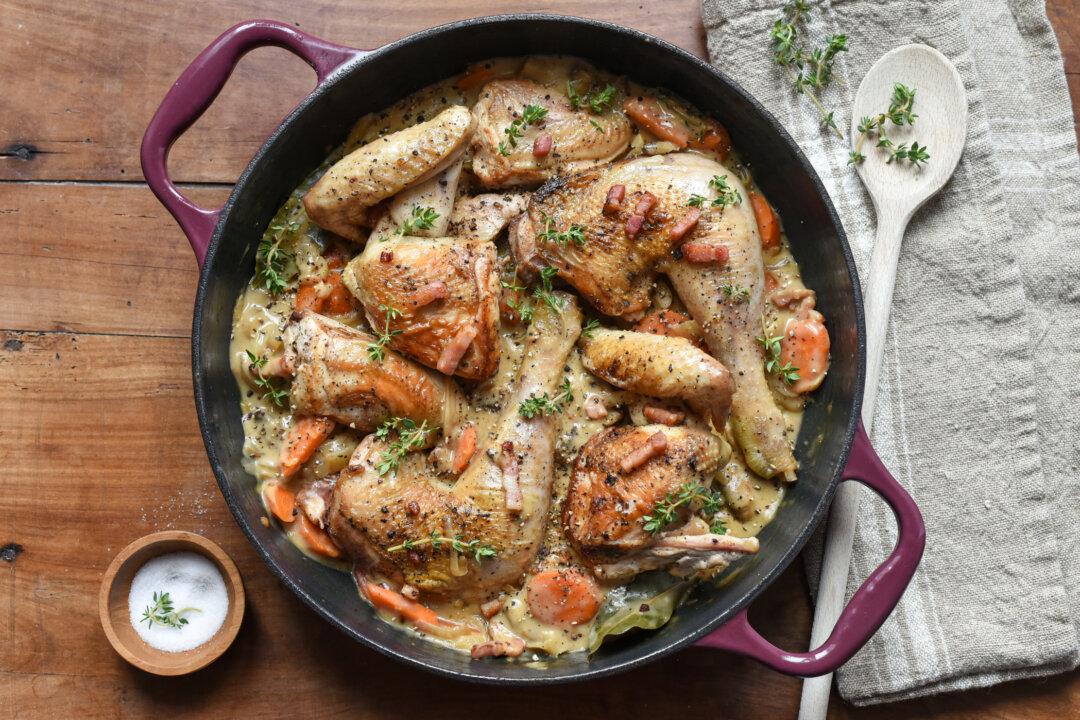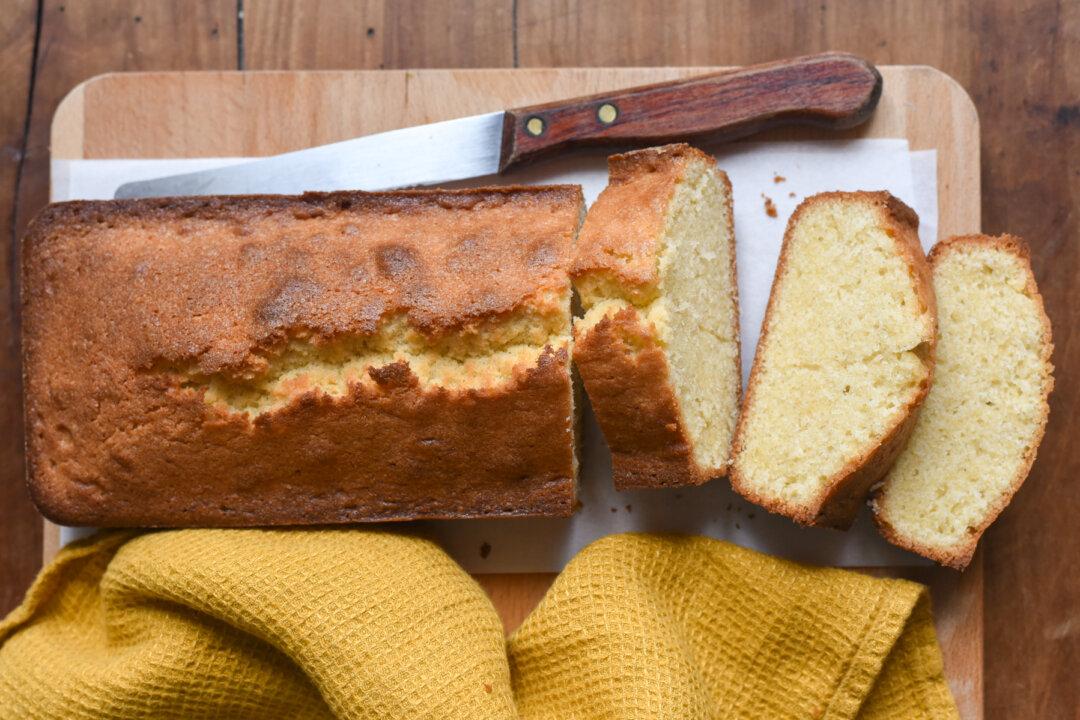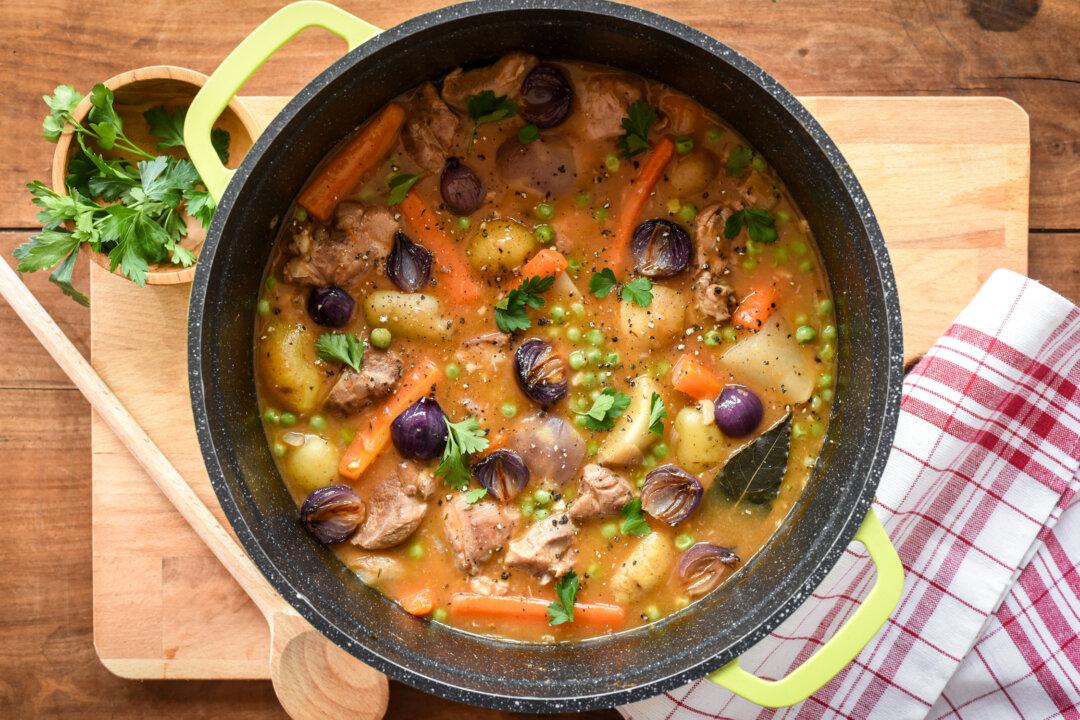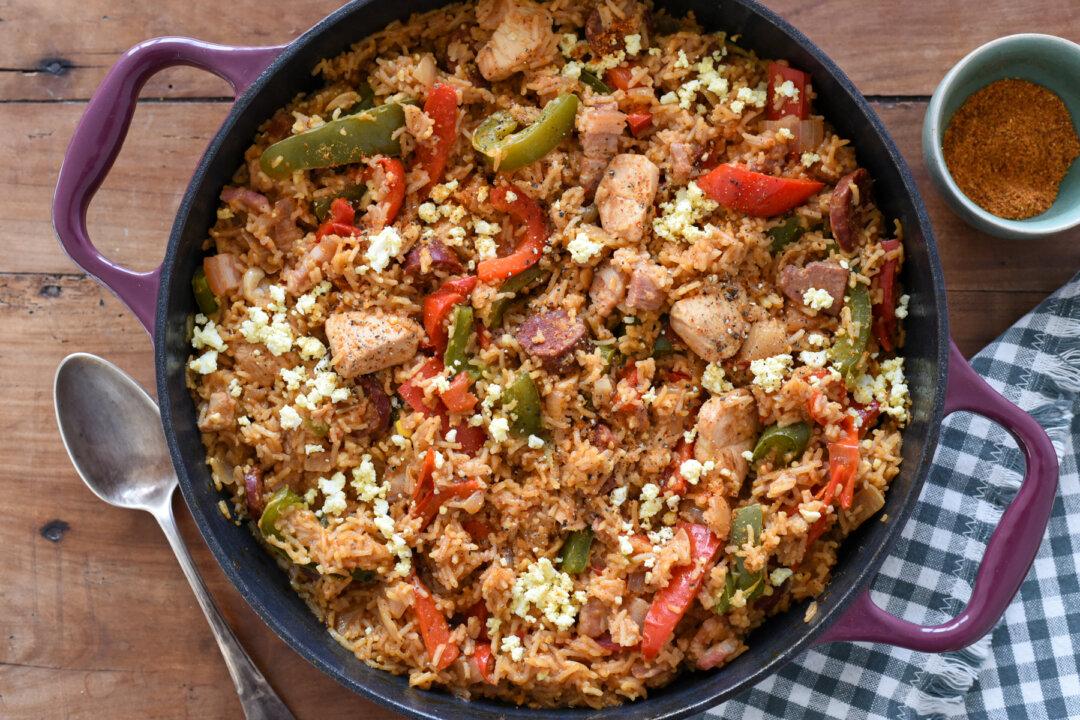When cooking a pot of garbure, your ladle is your timer. Stick the ladle in the middle of the pot, and if it can stand upright on its own, the soup is ready.
Hailing from the southwestern province of Gascony, just north of the Pyrenees mountains, garbure is a rustic soup consisting of a smoked ham hock, beans, cabbage, and seasonal vegetables, all slowly stewed together until thick, rich, and full of smokey flavor. It’s a great classic of French mountain cooking, eaten year-round but best enjoyed on a blustery winter day.
Like many now-classic French dishes, garbure was once peasant food. Cooked and enjoyed in rural areas of the southwest of France, its recipe varied from one farm to the next, following the seasons, the produce available in their gardens, and the preserved meat available in their salting tubs.
Eventually, the soup became more popular and was adopted by many home cooks, not only farmers. The recipe remained quite adaptable, but always included cabbage, beans, potatoes, seasonal vegetables if available, and smoked meat—or sometimes confit, in richer households.
Making Garbure
The making of garbure is best suited for weekends, when you can devote a few hours to being home. It requires time, but not necessarily a lot of effort.Building the Broth
A great garbure starts with building a good broth. No store-bought stock here! The broth is made from scratch by simmering a clove-poked onion, herbs, and a whole smoked ham hock for an hour. As the ham hock cooks, its collagen and fat melt into the broth, infusing it with that uniquely rich, smokey flavor.The Right White Beans
The famous Tarbais beans, or haricots Tarbais, are traditionally used in the preparation of garbure. Grown in the Tarbais region of southwestern France, these white beans are beloved for their thin skin, creamy flesh, and ability to hold their shape while cooking. They are very popular in the south of France, and are the base of many local recipes, including cassoulet.Take Care With the Cabbage
As with most mountain cooking, garbure was born from a need to adapt to the region’s climate and altitude. In the Pyrenees mountains, locals would make do with only what could grow at high altitudes—in this case, potatoes and sturdy cabbages.Add a Touch of Luxury
This recipe, which calls for ham hock as the only meat, is often associated with Béarn, located at the southern tip of Gascony in the Pyrenees mountains. This version is the oldest one, anchored in the tradition of simple, affordable peasant food. But if you travel today to the Landes, the western part of Gascony stretching along the Atlantic coast, often referred to as France’s duck country, chances are you will be served a fancier version of garbure including both ham and duck confit.If you wish to include duck confit in this recipe, four pieces will be enough. You can buy confit pieces in specialty markets or try to make your own at home. Then, simply sear them in a pan to crisp up the skin, and serve each bowl of garbure topped off with a piece.
Good to the Last Sip
With the last spoonfuls of this soup, you may be tempted to partake in the tradition of faire chabrot. This peculiar custom from rural France calls for pouring a shot of red wine into the last dredges of your soup, and lifting the bowl to your lips to drink it, elbows planted on the table. A great symbol of French conviviality!Classic Garbure
This recipe starts the day before, with soaking the white beans overnight. On the day of, the cooking of the soup takes up to four hours, but this only includes about 30 minutes of active time. For the rest, you can simply keep an eye on the simmering pot, while going on with your other leisurely activities.This is a great dish for feeding a large table, or to keep in the fridge for leftovers for the next 2 or 3 days. In fact, some say garbure is even better reheated the next day.
- 8 ounces dried white beans
- 2 1/2 pounds smoked ham hock
- 1 large onion, peeled
- 8 to 10 cloves
- 1 stalk celery
- 4 bay leaves
- 4 to 5 sprigs fresh thyme
- 4 1/2 quarts (18 cups) water
- 4 tablespoons duck fat (or butter)
- 2 garlic cloves, crushed
- 2 large carrots, peeled and cubed
- 1 large turnip, peeled and cubed
- 1 leek, cut in 1/2-inch half rounds
- 1/2 Savoy cabbage, shredded
- 3 to 4 russet potatoes, peeled and cubed
- Red pepper flakes, for garnish


In a large frying pan, melt the duck fat over medium-high heat. Add the garlic, carrots, turnips, and leek. Cook for about 6 to 7 minutes, stirring occasionally, until the leek is translucent (but not caramelized yet).
After the broth has simmered for an hour, remove about 4 cups of liquid. Add the vegetables and drained beans. Season with salt and pepper. Cover the pot and simmer for another hour.


Remove the ham hock from the pot and transfer it to a cutting board. Remove and discard the skin and excess fat, and shred the meat with a fork; at this point, the meat should fall off the bone easily. Return the shredded meat to the pot.


Cook for 15 more minutes, uncovered, and adjust seasoning if needed. To test the thickness of the soup, stick a soup ladle in the middle of the pot: If it stands upright on its own, it’s ready. If not, continue simmering the soup until it thickens more.

Serve in individual bowls with a light sprinkle of red pepper flakes and big slices of bread on the side.






